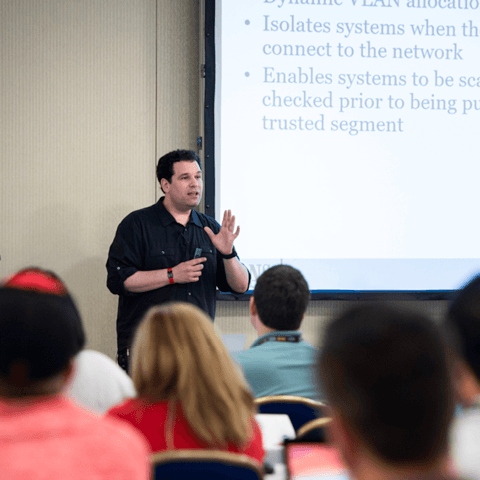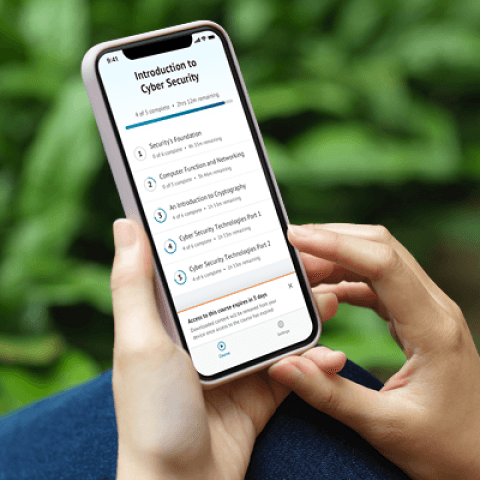SEC595: Applied Data Science and AI/Machine Learning for Cybersecurity Professionals


Experience SANS training through course previews.
Learn MoreLet us help.
Contact usBecome a member for instant access to our free resources.
Sign UpWe're here to help.
Contact UsApply your credits to renew your certifications
Attend a live, instructor-led class at a location near you or remotely, or train on your time over 4 months
Course material is geared for cyber security professionals with hands-on experience
Apply what you learn with hands-on exercises and labs
Learn how to perform advanced OSINT investigations as well as utilize JSON and Python. Explore topics such as cryptocurrency, the dark web, disinformation, and advanced image and video OSINT analysis.
The course manages to provide both breadth and depth, with practical hands-on practices and tools students can implement right away.
Open-Source Intelligence (OSINT) is the engine behind most modern investigations. As cases grow more complex and data sources multiply, basic techniques often fall short. SEC587 is fast-paced advanced OSINT training that tackles these challenges head-on, delivering cutting-edge methods to collect and analyze OSINT data at scale.
You'll learn to integrate programming and automation using Python and APIs to gather information efficiently. The curriculum also teaches rigorous techniques to verify sources and ensure your findings are unbiased. SEC587 also explores specialized OSINT domains: the Dark Web, cryptocurrency tracing, disinformation campaigns, Russian and Chinese OSINT, advanced image/video forensics, and even leveraging AI for analysis.
Throughout the six-day course, 28+ hands-on labs immerse you in realistic scenarios—from tracing cryptocurrency transactions to sanctioned entities to exposing deepfake videos. This intensive practice ensures that, by the end of SEC587, you will be able to confidently apply these advanced techniques in real-world investigations.


Matt Edmondson, Senior SANS Instructor, STI faculty, and Founder of Argelius Labs, authored SEC497 and SEC587. A DHS veteran with 11 GIAC certifications and OSCP, he draws on 20 years of investigations to deliver accessible, real-world OSINT training.
Read more about Matt EdmondsonExplore the course syllabus below to view the full range of topics covered in SEC587: Advanced Open-Source Intelligence (OSINT) Gathering and Analysis.
Section one introduces disinformation and methods for assessing information reliability using techniques like Admiralty code, CRAAP, and ACH. It also covers Russian and Chinese OSINT, with hands-on labs in disinformation detection, facial recognition, and accessing restricted platforms.
In Section two, students learn key Python skills for OSINT, including web scraping and attribution management. You’ll build a real-time intelligence dashboard, integrate AI-powered APIs, and explore persistent monitoring of platforms like Telegram and Discord, plus deploying Python code via AWS Lambda.
This section covers advanced image and video verification, steganography detection, and AI-powered audio analysis, including transcription and speaker recognition. Students learn to integrate AI into OSINT research while detecting AI-generated content. It also explores advanced domain enumeration techniques and concludes with a new section on gaming OSINT.
This section covers creating and managing sock puppets while maintaining OPSEC. Students explore OSINT techniques for the Dark Web, tracking criminal marketplaces, locating hidden servers, and automating monitoring. It includes a cryptocurrency lab on transaction tracking and sanctioned entities. The day ends with a wireless OSINT overview.
Section five covers building and using OSINT monitoring tools, including third-party and self-hosted options for OPSEC. Students learn to access password-protected files, gather vehicle-related OSINT, and automate credential discovery across offline and online sources. A new lab explores workflow automation frameworks for efficient intelligence gathering.
The SEC587 capstone is a team-based OSINT challenge, collecting live data under time pressure. Teams apply Python and advanced techniques, delivering findings to peers.
Responsible for analyzing data from multiple disparate sources to provide cybersecurity and privacy insight. Designs and implements custom algorithms, workflow processes, and layouts for complex, enterprise-scale data sets used for modeling, data mining, and research purposes.
Explore learning pathThis role uses cybersecurity tools to protect information, systems and networks from cyber threats. Find the SANS courses that map to the Protection SCyWF Work Role.
Explore learning pathAnalyzes data from multiple sources to prepare environments, respond to information requests, and support intelligence planning and collection requirements.
Explore learning pathResponsible for collecting, processing, analyzing, and disseminating cybersecurity threat assessments. Develops cybersecurity indicators to maintain awareness of the status of the highly dynamic operating environment.
Explore learning pathIdentifies collection priorities, develops plans using available assets, and monitors execution to meet operational intelligence requirements.
Explore learning pathEvaluates collection strategies, develops and validates requirements, and assesses performance to optimize collection asset effectiveness.
Explore learning pathThese resourceful professionals gather requirements from their customers and then, using open sources and mostly resources on the internet, collect data relevant to their investigation. They may research domains and IP addresses, businesses, people, issues, financial transactions, and other targets in their work. Their goals are to gather, analyze, and report their objective findings to their clients so that the clients might gain insight on a topic or issue prior to acting.
Explore learning pathCoordinates cyber operations plans, working with analysts and operators to support targeting and synchronization of actions in cyberspace.
Explore learning pathWhen purchasing a live, instructor-led course, add 4 months of online access. View price in the info icons below.
Add 6 months of hands-on skills practice. Add to your cart when purchasing your course.
This content is the next level for OSINT researchers. It fills in the areas that I have not been using but wanted to learn.
Very relevant material that provided a lot of good resources for my day to day work.
Having a broad coverage over multiple areas of OSINT is really helpful to reinforce the fundamentals and understand the diverse applications of an open source investigator's skills.

Get feedback from the world’s best cybersecurity experts and instructors

Choose how you want to learn - online, on demand, or at our live in-person training events

Get access to our range of industry-leading courses and resources